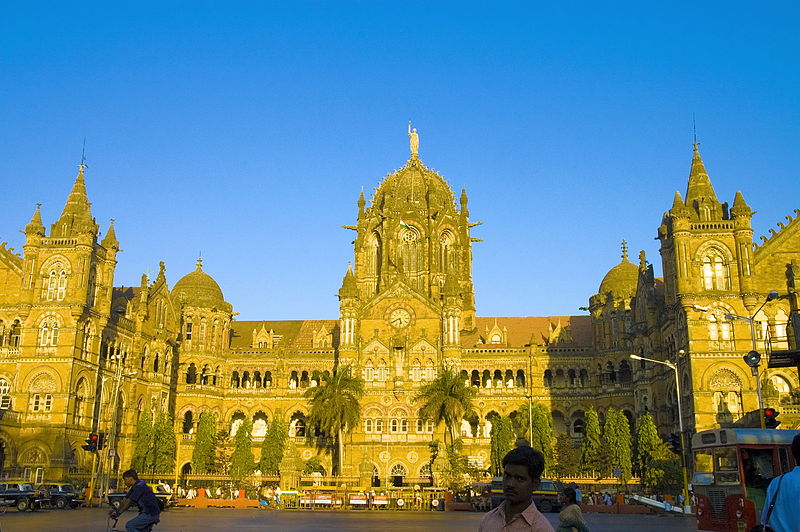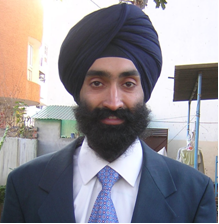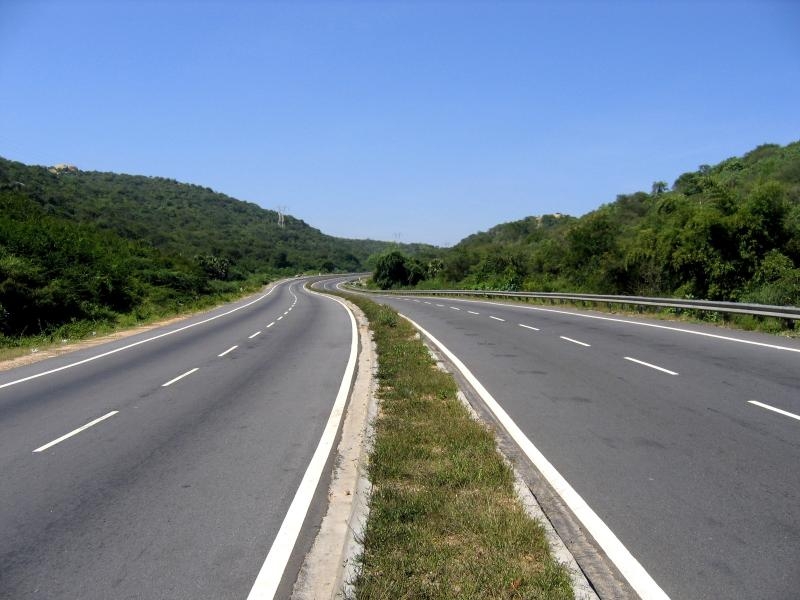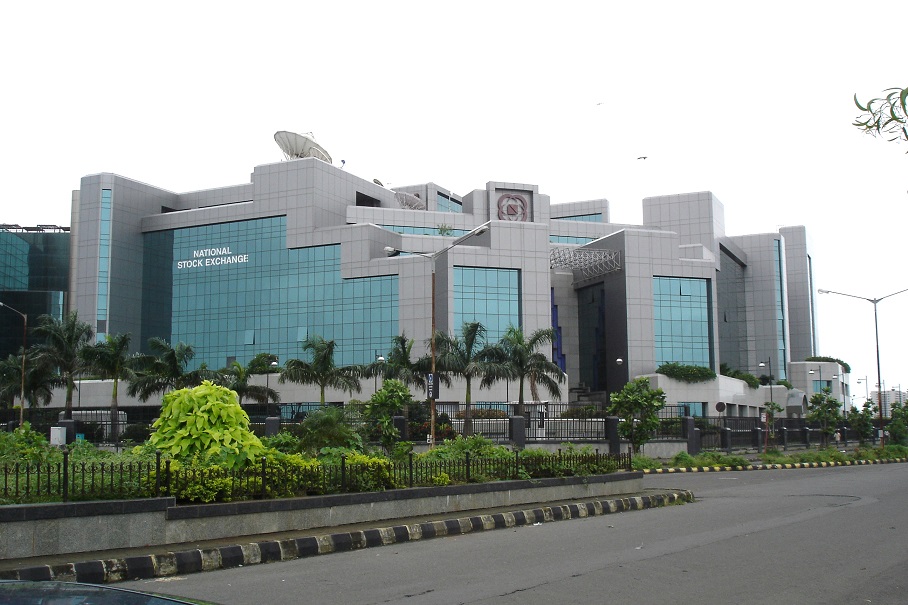Transnational highway to link India with Nepal, Bhutan & Bangladesh
October 3, 2016

Archetypal narrow and winding Himalayan roads like this one have been thoroughfares of trade for centuries.
In a move that could boost trade and commerce in the South Asian region, an ambitious project to link these countries through highways has been unveiled by the Indian government which the Manila-based Asian Development Bank has evinced interest to fund.
The Bangladesh-Bhutan-India-Nepal (BBIN) road initiative has been mooted by the finance ministry to improve ground connectivity in the region and the mandate is to complete the project in the next two years. The government has approved this highway construction and maintenance project, which is worth $ 1 billion, and Asian Development Bank has been roped in to fund the project. Estimates suggest, the project would increase trade in the South Asian region by 60 per cent.
This road project will cover Manipur and West Bengal in the Indian side. The project will include two highways in Manipur, upgradation of 122 km long Siliguri, Mirik, Darjeeling, widening of 60 km long national highway on the border with Bengal and Bangladesh, and construction of 123 km of road outside Koltata worth $ 250 million.
The move follows signing of a landmark motor vehicles deal by the country’s road transport and highways minister Nitin Gadkari, in Thimphu – the capital of Bhutan, last year, which envisaged regulating inter-movement of people, passengers and cargo between the South Asian countries.
Global digital payment transactions may have grown by 10% for first time: Capgemini
September 24, 2016
With digital payments gaining momentum across the globe, electronic transactions may have witnessed an unprecedented growth of 10 per cent in 2015, according to a latest World Payments Report 2016 (WPR) released by global consultancy firm Capgemini and banking major BNP Paribas. The report projected global digital payments transactions to have reached 426.3 billion in 2015, reflecting over 10 per cent growth from 2014, compared to a previous growth rate of 8.9 per cent.
The growth in digital payments transactions is largely being driven by strong economic growth in key developing countries, improved security measures such as EMV[1], biometrics as well as government initiatives designed to encourage electronic payments in these markets as the cost of cash continues to rise, the report said. The report noted growth in digital payments occurred across all regions, with developing markets experiencing the highest rates — 16.7 percent — and mature markets growing at 6.0 per cent, although mature markets still accounted for 70.9% of total global volumes.
For the first time, China surpassed the U.K. and South Korea in digital transaction volumes, taking fourth position among the top ten markets globally, behind the U.S., the euro zone and Brazil. “FinTechs as well as the creation of Innovation Labs in banking are establishing new precedents for developing superior customer journeys,” said Anirban Bose, Head of Banking and Capital Markets, Capgemini. “The key now is in the mix of the partnerships and collaboration that can be done to drive out the most innovative digital services possible at the right ‘moments of truth’ along the customer journey.”
The report said cards remain the fastest growing digital payments instrument since 2010, while cheque usage continues to decline. Immediate payments have the potential to drive growth in digital transactions as an alternative to cash and cheques, but efforts are needed to educate stakeholders, provide more value-added services and upgrade infrastructure at merchants and corporate companies.
A number of banks already have started to adopt a ‘digital-first’ mindset. According to the WPR, 79 per cent of bank executives now view FinTechs as partners. Banks could have additional opportunities to further drive innovation in transaction banking by opening up their internal systems through open application programming interfaces (APIs) and leveraging the requirements of the Payment Services Directive II.
27 more make the cut for Smart City
September 20, 2016
Smart cities to take shape in one year
Twenty seven more cities from 12 states have joined the list of smart cities in the third round, including five from Maharashtra. These 27 cities will need an investment of close to Rs 67,000 crore. With this new inclusion, 60 cities have now been selected by the urban development ministry in three rounds that covered 27 states and union territories (UT). Only nine more states and UTs are still to get on board, including Uttarakhand and Jammu & Kashmir.
Maharashtra has bagged five cities – the maximum number in this round – and which includes Thane, Nashik, Nagpur, Kalyan-Dombivali and Aurangabad.
Poll-bound Uttar Pradesh has three cities on the list including Prime Minister Narendra Modi’s constituency of Varanasi. The other two cities are Kanpur and Agra. Four cities each from Tamil Nadu and Karnataka have also made it to this third list, followed by three from UP and two each from Punjab and Rajasthan. One city each from Madhya Pradesh, Andhra Pradesh, Odisha, Gujarat, Sikkim and Nagaland were also selected in this round.
Sikkim and Nagaland are the latest entrants from north-east India to enter the government’s Smart City mission. According to the urban development ministry, an investment of Rs 1.44 lakh crore has been proposed for the 60 smart cities announced so far, under the smart city plan. Around 82 projects are under implementation from the first batch of 20 smart cities while implementation for 113 projects are expected to start soon. The ministry said smart cities will be seen taking shape in the next year or so.
With UPI backing, ToneTag vouches to complete transactions in 3 seconds
September 19, 2016
The Unified Payment Interface (UPI) that was launched recently by the National Payments Corporation of India (NPCI) – is already changing customers’ experience in payments, and also challenging companies to innovate and break new ground. ToneTag – a sound based technology that enables contact-less transfer of the UPI virtual address at the point of sale, without the merchant or customer having to manually divulge the information – is aiming to make end-to-end digital payments in three seconds, with the help of UPI at the back-end.
Customers using ToneTag can make contact-less payments from their feature phones, smartphones or tablets with just a single click, using nothing but sound waves! ToneTag reduces digital acceptance costs for merchants by removing hardware dependencies. ToneTag, which is available as an SDK (Software Development Kit), works over almost any device with a microphone or a speaker, irrespective of platform or specifications.
“While UPI simplifies and quickens the speed of payments at the server/back-end level, ToneTag plays a vital role in enabling quick contact-less payments at the ground level. The ToneTag technology has the capability to completely transform the way people pay during an offline in-store transaction. In the coming days, banks will offer UPI through a ToneTag experience,” says Kumar Abhishek, founder and CEO, ToneTag.
The ToneTag sound-based technology has already been evaluated and subsequently appreciated in a May 2016 document issued by NPCI. ToneTag can be integrated with any app that operates on almost any device or platform to allow secure and contact-less exchange of payment information. The company is targeting around 25 million customers by December 2016 and will be able to pay at 45 thousand UPI merchant terminals.
Maharashtra CM promises Metro for Kalyan-Bhiwandi-Dombivli
September 19, 2016
”The Maharashtra Government will definitely bring Metro to Kalyan-Bhiwandi-Dombivli. The DPR is in progress and a decision will soon be taken once technical formalities are completed”, said Honourable Chief Minister Devendra Fadnavis, today, after laying the foundation stone for the two 6-lane bridges to be constructed over Ulhas Creek at Motagaon and near Durgadi fort. He also said that the purpose of his forthcoming America visit is to “sign an agreement with software giant Oracle to convert Kalyan-Bhiwandi-Dombivli into smart cities.” The Chief Minister further promised to take up more infrastructure projects to ensure total development of the metropolitan region.
The Honourable Guardian Minister for Thane district, Eknath Shinde; the Honourable State Minister for IT and Medical Education, Ravindra Chavan and Honourable MP Kapil Patil thanked the state government for showing keen interest in the development of the area and the metropolitan region in general. It was only a few months back the CM had laid the foundation stone for a 3-km long flyover at Vanjarpatti on Bhiwandi-Kalyan road running from Rajiv Gandhi Chowk to Saibaba Mandir.
“Today we have one two-lane creek bridge and when the new bridge is completed the motorists will have eight lanes to experience a congestion free drive”, said UPS Madan, Metropolitan Commissioner, MMRDA. Honourable MLAs Narendra Pawar, Shantaram More, Mahesh Choughule, Kisan Kathure, Ganpat Gaikwad and Sarpanch of Village Kon, Vandana Patil were also present on the occasion.
MasterCard to help Smart Cities with innovative payments solution
September 11, 2016

MasterCard – one of the leading payment gateways of the world – is keen to partner with the government for its smart city vision by developing innovative solutions in the payments space. The global payments solution major has developed several technologies which offer customers simple and secured payments solutions. For example Masterpass, which with any bank wallet app makes life easier for the consumers, allows them to use their mobile banking app and purchase items at physical stores using a merchant specific code.
Similarly, it has introduced Mastercab – an in-app checkout service to book and pay for cabs, enabled by Masterpass.
Another interesting offering is “Selfie Pay” – a unique mobile payment verification service from MasterCard that aims to simplify the online shopping experience for consumers. All consumers need to do is use the phone camera to click a selfie as part of a two-step authentication process when shopping on the mobile. “As a global payments technology company, MasterCard has been enabling cities to become livable, sustainable and more inclusive. MasterCard is keen to partner with the Indian government for the Smart Cities vision. We can develop innovative solutions that make the lives of people and businesses easier – and that help India further strengthen its competitive position in the world economy,” said Mr. Porush Singh, Country Corporate Officer, India & Division President, South Asia, MasterCard.
MasterCard has tied up with the Skoch Group, a think tank dealing with socio-economic issues. At a recent summit which focused on ‘Smart India, Shrestha Bharat – From Promises to Delivery’, held at Hyderabad, some of the products of MasterCard were showcased to visitors.
Being Street Smart the public way
September 2, 2016
The SmartShehar, (Hindi word for city) mobile app has been around for about four years. Meet Chetan Temkar, its creator, who envisaged smart mobility long before ‘smart’ became a buzzword. After two decades spent in the US, Temkar knows a thing or two about smart commuting and smart mobility in large cities.
Extracts from an interview :-
Tell us how SmartShehar happened.
We started in 2006 when we created a car pooling mobile app which was short message service (SMS) based. I got into mobile apps in 2011 and thought about what could be done in Mumbai that is useful. In a city where over 30 lakh people use the public transport systems daily, I realized that with regard to buses, there was no information, unlike the trains. Even today, if you ask anybody about buses, no one knows too much about them. Hence, we decided to create a location-based application for buses.
What does the application do?
In short, it figures everything out. It finds out, in connection with your location in real-time, which buses are available and the nearest stops. If you then click on a bus, it shows all its stops on a map. If you then get into the bus, it shows you the next stop so you don’t have to keep asking the conductor. We have also done interesting things like showing the landmarks around every bus stop as people are mostly not aware of the colloquial names for these stops. It’s a very intelligent application. Moreover, based on the back-end intelligence we have about traffic, we try to figure out how long a bus will take to reach a particular point. This does not mean it is foolproof, because BEST does not have a tracking mechanism. However, we have suggested to them we’ll provide this functionality free of charge. All they need to do is buy a phone and put it in the bus. The bus driver enters the bus number, picks out the start and end stops and starts his journey. After that, the app does everything else.
In developed countries, all this information is relayed on display panels in the bus shelter itself. The problem with this in India, as BEST pointed out to us, is that people will either break the panels or take them away. Therefore, it is better to have the information on your smart-phone, and maybe this is even better as you don’t even have to be at the bus shelter. You could be at a pub nearby with a friend but you are informed always about the bus through your phone! Therefore, this is a good example of taking a global solution and localising it for the Indian context.
How many downloads do you have so far?
We have more than 250,000 downloads.
Have they peaked out at that level?
We generally get about 400-500 downloads daily if you count the other app as well. We have an app called Jumpin Jumpout which is a very ambitious project. We have parts of it ready. It allows you to share your care with your friends, or a group of people, friends of friends, or with strangers. The operation is very optimized. It is also being used in the US. With this app, as soon as you create a trip, it sends a notification to all the people on the route or to selected people. These people get notifications that you have created a trip. Now, when you leave, actually start moving, people again get a notification about that.
The app is intelligent enough to figure out the speed at which you are moving so it knows that you are now in the car since you must be moving at a pace faster than if you were walking. It has a lot of logic built in.
What are the challenges you are facing here?
It is very difficult to get public data. We have been talking to the government to make this data available to website owners and app makers. We have also offered to put all the data in a certain format. If the government does this, then it will open up these kinds of services. I’m hoping that now with the focus on start-ups by the current government, they’ll push these kinds of things. Once they make data open, then us app-makers can get to work. When we had gone to Western Railways, we faced a very high-handed and arrogant attitude from the official in charge there. In the US, where I worked for about two decades, it is exactly the opposite. They welcome you with open arms. However, the attitude of BEST has been great. Of course, we still have to ask many times, etc., but generally, they have been much better compared to the Railways.
What is your vision? What do you want to finally do with this app?
We envision a transparent, cashless, and effortless system to use. For instance, if I am at Andheri and want to go to Churchgate, the app should show me different options. I should be able to see trains, buses as well as people offering rides in their own cars. The app should not only show me all these options but also list the quickest way for me to reach my destination along with other details such as who has air-conditioning, for instance. We already have about 70 per cent of these functionalities in our apps. We’ll also have a seamless and transparent system which will enable one to pay through the mobile, whatever form of transport he or she decides to use. I believe the unique thing about us is we are taking an integrated approach.
The big data analytics platform we are building in the back-end will allow the government to make intelligent public policies. It will allow them to prioritize issues and also allow them to predict problems. This is a very ambitious goal but we feel such platforms are critical for the smart cities of the future.
How are you funded and are you making money yet through the app?
We are not yet making money. We are hoping for enough users. For SmartShehar, we have 2.5 lakh downloads already and we can leverage that. We are currently funded through friends and family. I have a partner and we have an office in Mumbai. There are about 10 of us, seven of whom are core staff and three or four associates work on a part-time basis. At this stage, we can’t reveal much as this relates also to our competitive edge. However, once we have a fixed set of users over a longer period who have an engagement with the app, we can look at ways to monetize what we are doing. We are not worried about that right now. Our goal is just to get as many downloads as possible at this point.
Empowering Smart City citizens with a twist
August 30, 2016
Jaskirat Singh, Founder, Webrosoft, was nominated at the Start Up, Stand Up India competition held in New Delhi earlier this year. The company’s Citizens’ Reporting and Mapping Tool (CRAMAT), as the name suggests, puts more power in the hands of the ordinary man.
Excerpts from an interview :
How did the idea for CRAMAT come about?
Three years ago, we were trying to solve a problem in south Punjab relating to cancer. Someone wanted to do a survey of cancer patients and plot some parameters with water quality samples on a map just to see if there was a correlation between the water and where the patients were living. We thought we’d give it a try. After a few months, we had created a special camera app that could take pictures and display the location and time. This way, we could ensure the accuracy of the location. This was the beginning. We realized this could also be used for other purposes and took it to the commissioner of Ludhiana. We told him we could change the parameters of what we are tracking from water samples to roads, street lights or anything else and that even citizens could use this to report civic problems. He was very excited and we launched in Ludhiana the next week. We then started pitching it to other cities. This is how it all started.
That’s a nice story.
Yes it is, isn’t it? How we then became associated with infrastructure was when our Ludhiana commissioner said the app was proving very useful with citizens using it to report problems quite enthusiastically. However, he said the bigger problem was that the grievances were not looked into properly (the basic problem with the Government). He also requested us for a project tracking system for road and bridge projects. If an app could be installed on the phones that the engineers carried, the commissioner would not have to go around the city to monitor or track different projects but see reports from his office. That is how we started projects for the municipal commissioner of Ludhiana and this was our first involvement with infrastructure. We realized this was good business and then decided to seriously work on the app to develop it even further.
After this, you started pitching to other cities?
We were now pitching the app for three things. One was infrastructure since all of them were now doing development and maintenance. Citizens’ grievance was the second one. The third thing which a few cities are also using is our app for attendance and monitoring civic personnel. This includes things like whether the sweepers have arrived on time, swept their area clean, etc.
So, it’s really a smart app, ideal for India’s Smart Cities project.
Our app started before the mission was announced and even before this government came to power. However, we realized we should use this buzzword once it came about since our app is actually a Smart City solution. So why were we not saying it? Therefore, the marketing strategy has been realigned and fits the current context well.
How many cities does the app cover?
There are different use cases. We have about 100 cities covered for grievance reporting. For infrastructure tracking, we are in two cities. For attendance monitoring in the waste management area, we are in two cities. Every city has at least a few hundred secondary dumping points and from there, it goes to the bigger dumping grounds. Tracking and monitoring is important as it is a citizen-centric issue.
What are the plans to expand your coverage?
We are thinking of merging these three into a single product. Although these three things sound very different, we are mostly targeting civic authorities. We’d like to put them into a package. We are also planning to pitch to the Union Government since that may help us find a faster route to pitch to the local governments. The biggest problem with local governments is they take at least six months to understand and take it to the next level for approvals. Unless this comes from higher up, it is slightly difficult. The Central Government is very gung-ho on Swachh Bharat and Smart Cities, so I am hoping for a push from there.
It should be easier for you now that you were nominated for this award…
I hope so but I am not in a position to pre-empt the Government and what it may do! We are trying at all levels, wherever we are getting access.
Have you looked at the cities chosen for the Smart Cities mission in the first phase?
Yes. Very interestingly, some of them have got in touch with us because those who are in the vicinity where we operate have obviously come to know about us. Some of them actually wanted to launch it before their deadline to show they had already implemented it! So, I am very hopeful because it looks like governments are waking up to technology. The push has come from the Central Government schemes. Swachh Bharat and Smart Cities have really helped, big time.
How would you classify what this app does?
In India, I do not know if there is anything like this. However, in the US, similar companies are categorized under civic technology. We feel we are closest to that.
How many downloads so far?
About 40,000 so far.
Don’t you think it should be more?
It is more than 100 cities, of course, with three cities in Punjab (Ludhiana, Mohali and Hoshiarpur) and over 100 cities in Karnataka. Karnataka was launching their m-governance platform last year and found this product suited them well. The MoU was signed with the state government and we launched it. However, after the complaints started rolling in, the problems arose because as so often happens with government, they weren’t prepared to handle all these complaints!
So, what is the way forward? Are you hopeful of more customers?
Yes, of course. While governments are slightly difficult customers, the problem is worse for us as a start-up. There are issues with cash flows and governments are not known for paying on time or even with a reasonable delay. Even ‘reasonable’ is not really anywhere within reason. However, the government is a very credible customer and it looks good in our portfolio. But we still need cash flows and are also targeting the private sector.
How do you envisage a model with the private sector as water, waste management, etc., are all state subjects?
We have a private sector customer already. The municipal corporation of Mohali wanted to track their cleaning personnel and floated a tender for a private player to sweep their roads. To ensure their money was spent on the work for which it was intended, they mandated the company to provide a tracking mechanism. So, we’re now a subcontractor for that company and we found that this was much better. Someone actually appreciated our work, paid us on time and listened to our problems and gave us opportunities to optimise things.
Cabinet approves 1120 km of National Highways in 5 states
August 30, 2016
The Cabinet Committee on Economic Affairs (CCEA), which is chaired by Prime Minister Narendra Modi, has approved development of 1,120 km of National Highways in the five states of Karnataka, Odisha, Bihar, Rajasthan and West Bengal. The revised cost is estimated at Rs 6,461 crore including cost of land acquisition, resettlement and rehabilitation and other pre-construction activities, according to an official statement.
CCEA said while the proposal was initially approved for Rs 5,193 crore, the cost has increased due to higher bid prices and increase in cost of land acquisition, resettlement, rehabilitation and the pre-construction activities. The projects are already taken up for implementation and 429 km has been completed. The civil works are expected to be completed by July, 2019 and maintenance works are expected to be completed by July, 2024.
The work for development to two-lane standards are under Phase-I of the National Highways Interconnectivity Improvement Project (NHIIP) with World Bank assistance. “The project will ensure safe, fast and all-weather movement of traffic on the proposed national highways mostly located in backward regions, thereby improving socio-economic development,” the statement said.
The postmodern alteration of the BKC
August 29, 2016
From swamp to swank, the transformation of Bandra Kurla Complex (BKC) is fast nearing completion. Now dotted with high-rises and a flurry of (still) ongoing construction activity, these are starkly juxtaposed with adjoining slums and remaining marshland. Not for much longer. If the planning authority for the area – the Mumbai Metropolitan Region Development Authority (MMRDA) – has its way, it will soon auction another plot of land measuring 12,500 square metres for more development (currently there is a ban on all new construction in the city by the Bombay High Court). Meanwhile, three ambitious elevated road projects as well as two flyovers have been planned to improve connectivity. Construction is already underway for some of these.
“Moreover, with the second and third metro lines planned for Mumbai, we are looking at the possibility of getting these two lines to intersect at BKC. This will be an underground station. That would make BKC accessible from almost all areas of Mumbai as well as improve last-mile connectivity to BKC,” UPS Madan, MMRDA metropolitan commissioner, said in a press conference. It’s just as well. On the drawing-board for decades, all of these projects need speeding up. Otherwise, says Ramesh Nair, COO, at property consultant JLL India, “BKC will lose its attractiveness. With all the modern construction there today, a new building of a million and a half square feet means 15,000 more people coming into the area in cars, trains and buses. The government has to fast-track these infrastructure connectivity projects,” says Nair.
Meanwhile, aware of the transport bottlenecks and the lack of last-mile connectivity to BKC, it is the property developers in the area who have come up with a novel solution. Radius Developers’ ONE BKC which houses companies such as Bank of America and Brookfield, among a host of other blue-chip companies, has tied up with Mumbai’s BEST buses to ferry all workers in the building in air-conditioned buses at specified, regular intervals from nearby railway stations to the office and back, both morning and evening. “Until the time we can compare ourselves to Shanghai or to Hong Kong, all these investments have to be made,” says Ashish Shah, COO, Radius Developers.
With so much happening, Madan is cognizant of the need to alter regulation to allow for residential development. In fact, rules have just been amended to allow residential development in up to 30% area of a commercial plot. “There is a need for mixed use also,” says Madan. “In a residential plot, we will permit commercial activity in the first two floors such as shopping, restaurants and showrooms that blend well with the gentry and make it a lively place 24*7, rather than between only 9 am and 6 pm, which is the situation currently. At night, on holidays and weekends, there should be something happening. That’s the whole idea.”
All this has prompted property developers to keep a hawk’s eye on the situation. Driven by the high-grade, white-collar demand, Himanshu Kanakia of Kanakia Group says he is looking to build more residential projects and will make a bid when MMRDA auctions more land. TEN BKC by Radius Developers and Rustomjee Seasons by Rustomjee, on the fringes of the business district, both under construction, boast a client’s list that reads like a veritable who’s who of the corporate and the financial world. With the International Financial Services Centre (IFSC) envisaged to come up here, it’s no wonder corporate head honchos are settling in for the long haul. Managing directors, CEOs, partners and principals at top private equity firms, vice presidents and country heads have all purchased apartments in these modish complexes.
With well-laid out social infrastructure already in place – clubs, hospitals, hotels, schools – the positioning is such that one would not need to leave BKC, says Nikhil Bhatia, MD, Capital Markets and Head, Western Region, CBRE South Asia. “This is a micro-market that is becoming increasingly very self-contained. I think this is going to be a global financial hub equivalent to anything we have seen in Asia. BKC 2020 is going to have a very different look and feel to it.”













